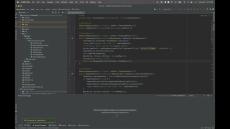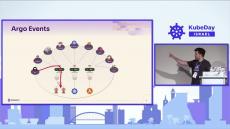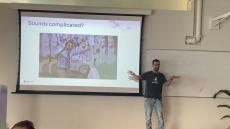- September 2023 (1)
- July 2023 (8)
- June 2023 (7)
- May 2023 (6)
- April 2023 (3)
- March 2023 (7)
- February 2023 (4)
- January 2023 (6)
- December 2022 (6)
- November 2022 (3)
- October 2022 (4)
- September 2022 (5)
- August 2022 (11)
- July 2022 (3)
- June 2022 (4)
- May 2022 (3)
- April 2022 (4)
- March 2022 (3)
- February 2022 (4)
- January 2022 (5)
- December 2021 (3)
- November 2021 (4)
- October 2021 (5)
- September 2021 (3)
- August 2021 (5)
- July 2021 (8)
- June 2021 (7)
- May 2021 (5)
- April 2021 (8)
- March 2021 (11)
- February 2021 (4)
- January 2021 (5)
- December 2020 (8)
- November 2020 (3)
- October 2020 (4)
- September 2020 (4)
- August 2020 (4)
- July 2020 (4)
- June 2020 (8)
- May 2020 (3)
- April 2020 (8)
- March 2020 (4)
- February 2020 (4)
- January 2020 (5)
- February 2019 (1)
With Rookout’s real-time instrumentation technology, a company can tackle bugs and issues without any need for coding, re-deploying or restarting the application. Rookout currently supports Python, JVM and NodeJS on all cloud environments, including serverless applications.
Using Rookout is as easy as inserting a breakpoint, only nothing breaks or stops. Choose and define rules to collect any data you need by setting non-breaking “breakpoints” in your live code with just a few clicks. Deliver the data anywhere – to your APM, alerting or logging tools, or just view it in our IDE-like interface.
Why Rookout?
- Production-grade debugging: Get full-stack, specific variables, metrics and more from your live code, as it runs in dev, staging, and production. Pipeline the extracted data anywhere, in real-time, even if you’d never thought about it beforehand or created any instrumentation to collect it.
- Cut debugging time by 80%: Rookout eliminates the burdensome debugging process of writing more code, testing, getting approval and redeploying. Instead, just point & click. Speed up debugging iterations, and decrease frustration and context switching.
- Any cloud, any environment: Our solution supports Python, JVM, and Node.js on AWS, Microsoft Azure, Google Cloud or on your bare metal. Enjoy end-to-end security, coupled with a small footprint and negligible performance impact.
Slash Development Time with Non-Breaking Breakpoints. No restarts, redeployment or extra coding needed.





















